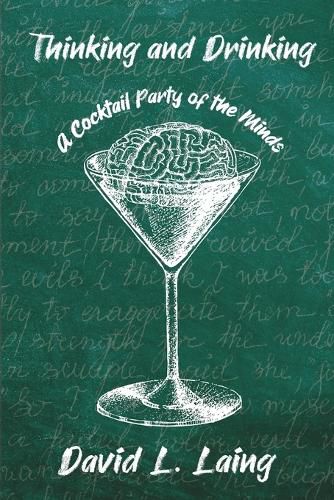Readings Newsletter
Become a Readings Member to make your shopping experience even easier.
Sign in or sign up for free!
You’re not far away from qualifying for FREE standard shipping within Australia
You’ve qualified for FREE standard shipping within Australia
The cart is loading…






From the imagination of visionary (and somewhat eccentric) writer and artist David L. Laing comes Thinking and Drinking: A Cocktail Party of the Minds. T.S. Eliot and Erik Satie cordially invite you to a cocktail party with some of the greatest minds in history. Erik politely demands that guests dress in all white. Notable guests include Socrates, Shakespeare, Benjamin Franklin, Einstein, Beethoven, Charles Dickens, Ernest Hemingway, Thomas Edison, Nikola Tesla, Van Gogh, Sigmund Freud, Nietzsche, Mary Shelley, Oscar Wilde, George Sand, Edgar Allan Poe, Nostradamus, Groucho Marx, a 30,000-year-old cave man, and a polar bear. Hemingway will likely need a ride home.
What would happen if history's greatest thinkers, philosophers, scientists, artists, musicians, writers and eccentrics came together for a cocktail party, beyond the confines of time and space, in varying degrees of intoxication? Author Laing's answer is Thinking and Drinking, an illuminating, entertaining and delightfully bizarre thought experiment from the depths of his wild imagination.
Written in the form of a Platonic Dialog between these notable figures and many, many others, the magical realism and open bar in Thinking and Drinking allow each character to embody their most essential nature and engage with other luminaries from different eras and corners of the world that would be otherwise impossible. The dialog and interactions that unfold give insight into each person's life, as they explore their thoughts and theories, share their histories and notable quotations, and demonstrate their various neuroses.
Plato preferred to write in a dialogical form because he believed that oral communication is superior to written text. He believed that writing in the form of dialogues was useful in transmitting principles to people with the aim of spreading the concepts of his doctrine in the most congenial way.
A dialogue is a tool that mimics the way the soul tries to talk to itself. The dialogues don't stop with the book-you need to discuss it with other people afterwards. The book is a kind of flame to ignite and have it leap to another soul!
Laing invites the reader to suspend disbelief, embrace the impossible, and let your imagination and curiosity guide you through this one-of-a-kind journey.
$9.00 standard shipping within Australia
FREE standard shipping within Australia for orders over $100.00
Express & International shipping calculated at checkout
From the imagination of visionary (and somewhat eccentric) writer and artist David L. Laing comes Thinking and Drinking: A Cocktail Party of the Minds. T.S. Eliot and Erik Satie cordially invite you to a cocktail party with some of the greatest minds in history. Erik politely demands that guests dress in all white. Notable guests include Socrates, Shakespeare, Benjamin Franklin, Einstein, Beethoven, Charles Dickens, Ernest Hemingway, Thomas Edison, Nikola Tesla, Van Gogh, Sigmund Freud, Nietzsche, Mary Shelley, Oscar Wilde, George Sand, Edgar Allan Poe, Nostradamus, Groucho Marx, a 30,000-year-old cave man, and a polar bear. Hemingway will likely need a ride home.
What would happen if history's greatest thinkers, philosophers, scientists, artists, musicians, writers and eccentrics came together for a cocktail party, beyond the confines of time and space, in varying degrees of intoxication? Author Laing's answer is Thinking and Drinking, an illuminating, entertaining and delightfully bizarre thought experiment from the depths of his wild imagination.
Written in the form of a Platonic Dialog between these notable figures and many, many others, the magical realism and open bar in Thinking and Drinking allow each character to embody their most essential nature and engage with other luminaries from different eras and corners of the world that would be otherwise impossible. The dialog and interactions that unfold give insight into each person's life, as they explore their thoughts and theories, share their histories and notable quotations, and demonstrate their various neuroses.
Plato preferred to write in a dialogical form because he believed that oral communication is superior to written text. He believed that writing in the form of dialogues was useful in transmitting principles to people with the aim of spreading the concepts of his doctrine in the most congenial way.
A dialogue is a tool that mimics the way the soul tries to talk to itself. The dialogues don't stop with the book-you need to discuss it with other people afterwards. The book is a kind of flame to ignite and have it leap to another soul!
Laing invites the reader to suspend disbelief, embrace the impossible, and let your imagination and curiosity guide you through this one-of-a-kind journey.